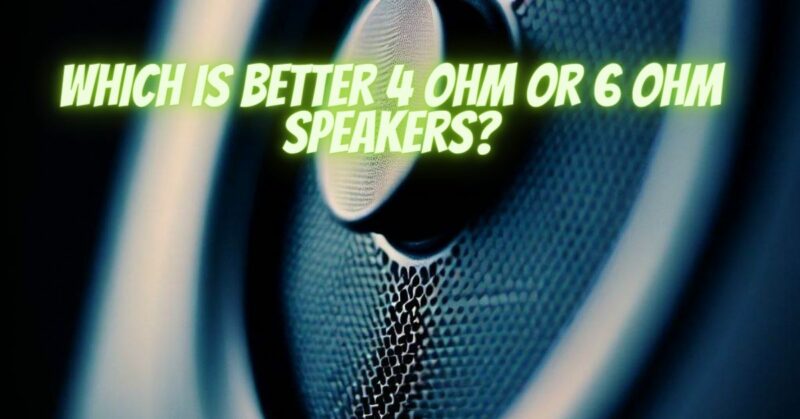The quest for the perfect sound system often involves navigating through a maze of choices, and one crucial decision lies in selecting the right speaker impedance. Among the common options are 4-ohm and 6-ohm speakers, each with its own set of characteristics. This article aims to shed light on the differences between 4-ohm and 6-ohm speakers, helping you make an informed decision based on your audio preferences and setup requirements.
Understanding Speaker Impedance
Speaker impedance, measured in ohms, signifies the electrical resistance a speaker offers to the amplifier’s current. It plays a significant role in determining how power is distributed, the amplifier’s compatibility, and the overall sound quality.
4-Ohm Speakers: Power and Intensity
4-ohm speakers have a lower impedance compared to 6-ohm speakers. This implies that they draw more current from the amplifier, potentially leading to higher power output and increased sound intensity. These speakers are often favored in applications where maximizing power and creating impactful sound are priorities.
The advantage of 4-ohm speakers lies in their capability to deliver more power and dynamic range. However, they can also place additional strain on the amplifier and power source, potentially requiring a robust setup to handle the increased current demands.
6-Ohm Speakers: Balance and Flexibility
6-ohm speakers have a slightly higher impedance than 4-ohm speakers, which can result in a more balanced power distribution between the amplifier and the speaker. This can lead to a more stable audio performance and reduced stress on the amplifier.
6-ohm speakers are often chosen for their compatibility with a wide range of amplifiers. They offer a compromise between power and stability, making them suitable for various audio setups without pushing the limits of amplifiers or electrical systems.
Sound Quality Considerations
While the impedance of speakers does impact their power handling, the superiority of 4-ohm or 6-ohm speakers in terms of sound quality isn’t solely determined by impedance. Other factors, such as speaker design, driver quality, enclosure type, amplifier quality, and room acoustics, contribute significantly to the overall audio experience.
Choosing the Right Option
The choice between 4-ohm and 6-ohm speakers should be based on various factors:
- Audio Goals: If you seek powerful and intense sound and have an amplifier capable of handling lower impedance, 4-ohm speakers might be preferable.
- Compatibility: For versatility and compatibility with a wide range of amplifiers, 6-ohm speakers offer a balanced option.
- Amplifier Capabilities: Ensure your amplifier can handle the impedance of your chosen speakers to prevent performance issues.
- System Design: Evaluate the overall design of your audio setup, including amplifiers, speakers, and room acoustics.
The decision between 4-ohm and 6-ohm speakers depends on your audio preferences, amplifier capabilities, and system requirements. While 4-ohm speakers can deliver more power and intensity, 6-ohm speakers offer compatibility and balance. Sound quality and performance depend on the synergy of various factors, including impedance, speaker quality, and overall system design. Ultimately, the right choice hinges on your goals and the characteristics of your audio setup.


